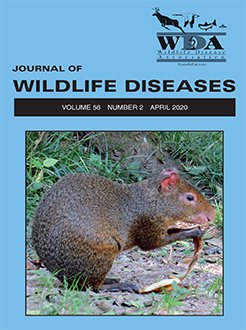The raccoon (Procyon lotor) roundworm, Baylisascaris procyonis, is an emerging wildlife zoonosis of public health significance in North America. Although the adult stage typically causes no disease in raccoons, the larval stage can cause significant disease in a variety of species, including humans. Raccoons often use human environments, which may increase the risk of B. procyonis exposure in people, particularly in urban settings. Because of this, our objectives were to identify host and environmental risk factors associated with the prevalence and intensity of B. procyonis infection in raccoons in Ontario, Canada. Between 2013 and 2016, 1,539 raccoons were collected and examined for the presence of B. procyonis. Thereafter, we analyzed our data for the influence of age, sex, fat stores, human population size, land use classification, season, and year of collection on the prevalence and intensity of infection. With multilevel logistic regression models, we identified significant associations between prevalence and host age, prevalence and amount of fat stores, and prevalence and season of collection; a significant two-way interaction was also identified between host sex and land use classification. Additionally, by using multilevel negative binomial regression models, we identified significant associations between the intensity of parasite infection and season of collection, as well as three significant two-way interactions: host sex and land use classification, host age and land use classification, and host sex and amount of fat stores. These findings help provide a more complete understanding of B. procyonis ecology in raccoons, including identifying associations between different environments and B. procyonis, which may assist in the development of future risk management strategies.
How to translate text using browser tools
31 March 2020
DEMOGRAPHIC AND ENVIRONMENTAL FACTORS ASSOCIATED WITH BAYLISASCARIS PROCYONIS INFECTION OF RACCOONS (PROCYON LOTOR) IN ONTARIO, CANADA
Shannon K. French,
David L. Pearl,
Leonard Shirose,
Andrew S. Peregrine,
Claire M. Jardine
ACCESS THE FULL ARTICLE

Journal of Wildlife Diseases
Vol. 56 • No. 2
April 2020
Vol. 56 • No. 2
April 2020
Baylisascaris procyonis
environment
host
human land use
Procyon lotor
raccoon
risk factor




